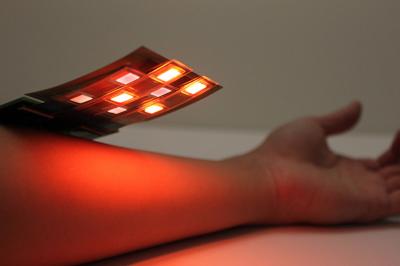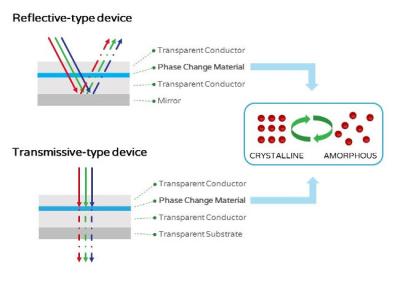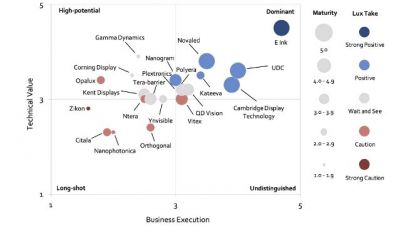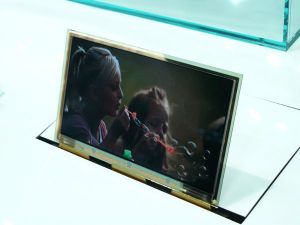 Cambridge Display Technology (CDT) is a material developer, that was spearheading polymer-OLEDs (or PLEDs) technology development.
Cambridge Display Technology (CDT) is a material developer, that was spearheading polymer-OLEDs (or PLEDs) technology development.
CDT is based in Cambridge, UK, and is owned by Sumitomo Chemicals. The company today is no longer involved in OLED related technologies.
Cambourne Business Park
Cambridgeshire
CB23 6DW
United Kingdom
Researchers use printed red and near-infrared PLEDs to create a flexible blood oxygen sensor
Researchers from the University of California Berkley developed a new flexible and lightweight blood oxygen sensor that can map oxygen levels over large area. The sensor uses an array of red and near-infrared OLEDs, together with organic photo-diodes, printed on a flexible substrate.

The research was supported by Cambridge Display Technology, which means that these red and near-infrared printed OLEDs use polymer emitters (PLEDs).
Phase-changing materials to enable rich-color efficient e-paper displays?
Researchers from Oxford University developed a new technology based on phase-change materials (similar to ones used in re-writable DVDs) that can be used to create non-volatile highly-efficient displays - similar to E Ink displays. The University established a new company called Bodle Technologies to commercialize this new technology.

The phase-change materials can manipulate light and can be used to filter, steer or dim light using very little power. Bodle already demonstrated a sub-100 nm pixel size and a very rich color gamut - they say it exceeds "other display technologies", although it's not clear what they mean by that...
Novaled, CDT and others to co-develop low-cost high-performance soluble OLED lighting technologies
The EU launched a new project (called ENAB-SPOLED) that aims to use solution-based OLED materials to enable high performing cost competitive OLEDs for the lighting market and to develop a functional luminaire demonstrator. More specifically, the project partners will develop new materials (transport materials, emitters), new optical technologies for light guiding, and also process technologies for solution processing of small molecule and PLEDs.
This 2-year project has a budget of â¬4 million and is supported by Germany, Austria and the UK. The project partners are Novaled, Cambridge Display Technology, Tridonic, Zumbotel, the University of Durham and the Fraunhofer IAP. More information can be found here.
Apple poaches senior OLED researcher from LG Display
 Apple has hired a new executive into its Display group - Dr. Jueng Jil Lee, a former OLED research fellow at LG Display, who apparently was involved with printing technology research. Dr. Lee's previous employee (before LGD) was Cambridge Display Technology (now owned by Sumitomo).
Apple has hired a new executive into its Display group - Dr. Jueng Jil Lee, a former OLED research fellow at LG Display, who apparently was involved with printing technology research. Dr. Lee's previous employee (before LGD) was Cambridge Display Technology (now owned by Sumitomo).
Apple is interested in OLEDs, and the company already has several patents involving flexible OLEDs, OLED based BLUs for LCDs, OLED control schemes and others. Rumors about OLED products from Apple keep coming (the latest one involving 50" bendable TVs is rather dubious). I guess an OLED iOS product will come eventually - the real question is when...
Lux compares display developers for technical value and business execution
Lux Research posted an interesting grid that shows how different display developers rate on technical value and business execution. It includes mature technologies (such as OLED and e-paper) and emerging technologies such as electrochromic and electrofluidic displays.

Lux says that OLED materials and equipment developers have a clear head start over other technologies, with notable players such as UDC, CDT, Novaled and Kateeva. The company that stands out in both technical value and business execution is E Ink - with high score in technology and IP and strong partnerships and management team. E Ink is the only company that scores a "strong positive" - with their nearly 100% market share of the electrophoretic market - which is used in products such as Amazon's Kindle and B&N Nook e-readers.
More details about Sumitomo's upcoming PLED material factory
A few weeks ago we reported that Sumitomo Chemical began construction of a PLED material factory (which will be operational in 2012) in a several billion yen investment. These materials are aimed towards large panel (OLED TV) production. Today we have a new report that say that Sumitomo made a breakthrough in its PLED material technology - which will eventually enable production cost to be slashed by up to 50% (compared to SM-OLED based displays).
 Sumitomo 6.5-inch AMOLED prototype
Sumitomo 6.5-inch AMOLED prototype
The annual output of their new Osaka plant will be enough to produce 4-5 million 40" OLED TVs. Sumitomo plans to offer these materials to TV makers in Japan, South Korea, and Taiwan. PLEDs (or Polymer-OLEDs, sometimes called PLED too) are OLED devices made from polymer (large-molecules) materials and are more easily adapted for printing (solution-processable) compared to Small-Molecule OLEDS (SM-OLEDs). Some companies believe that PLEDs are the best way to create large OLED panels using printing methods. You can read more about PLEDs here.
UDC's key patent claims denied in Germany?
There are reports that Universal Display's key PHOLED patent's key claims has been invalidated and revoked in an Oral Proceeding of the European patent office. According to the report UDC will have to submit a much narrower patent - deleting any references to any phosphorescent materials other than iridium. The opposition to the patent was filed by Merck, BASF, and Sumation.

UDC responded to this story: "The European Patent Office conducted an oral hearing on November 3rd. The EPO panel announced its decision to maintain the patent with claims directed to OLEDs containing phosphorescent organo-metalic iridium compounds. A transcript of this hearing will be available in two weeks. UDC's earning reports will be released tomorrow and hopefully we'll learn more about this issue.
CDT and Singapore's NUS signed a five-year IP licensing pipeline agreement
 Cambridge Display (CDT) and the National University of Singapore (NUS) Organic Nano Device Laboratory (ONDL) signed a five year intellectual property (IP) pipeline licensing agreement to commercialize the innovations arising from NUS's polymer-OLED (PLED) research.
Cambridge Display (CDT) and the National University of Singapore (NUS) Organic Nano Device Laboratory (ONDL) signed a five year intellectual property (IP) pipeline licensing agreement to commercialize the innovations arising from NUS's polymer-OLED (PLED) research.
Under the terms of this agreement, CDT will be able to access new innovations from ONDL research and take licenses in existing and new IPs in PLED displays and lighting, solar cells and thin film transistor circuits. CDT will pay royalties to the NUS if/when they commercialize these activities.
New low-cost OLED lighting project gets funding from the UK
A new project called TOPDRAWER (Thin organic prototypes, design, research, applications with end-user recognition) has secured funding from the UK government, and will start in early November and will run for 2.5 years. This is actually a followup project to TOPLESS, and is also lead by Thorn lighting.
 TOPLESS project OLED lamp prototype
TOPLESS project OLED lamp prototypeThe consortium will develop and demonstrate a printed manufacturing process that will be integrated into attractive designs that have been created through consultation with potential end-users. The manufacturing process will be proved and tested within PETEC, that will acquire and install a large-area coating line.
CDT and CIT Demonstrate ITO-Free PLED Lighting Panel
 CDT say they have produced an ITO-free PLED Lighting device, using a fine copper mesh. They have collaborated with Conductive Inkjet Technology (CIT) in the NOMAD project funded by the UK's government.
CDT say they have produced an ITO-free PLED Lighting device, using a fine copper mesh. They have collaborated with Conductive Inkjet Technology (CIT) in the NOMAD project funded by the UK's government.
ITO is expensive and brittle, and is not so useful for flexible electronics. The new manufacturing method demonstrated in the NOMAD project reduces costs by eliminating ITO along with significantly reducing the capital and processing costs for patterning metal bus bars which distribute current and ensure the uniformity of light emission. CIT’s process eliminates the need for traditional vacuum sputtering equipment and etching tanks.
Pagination
- Page 1
- Next page

